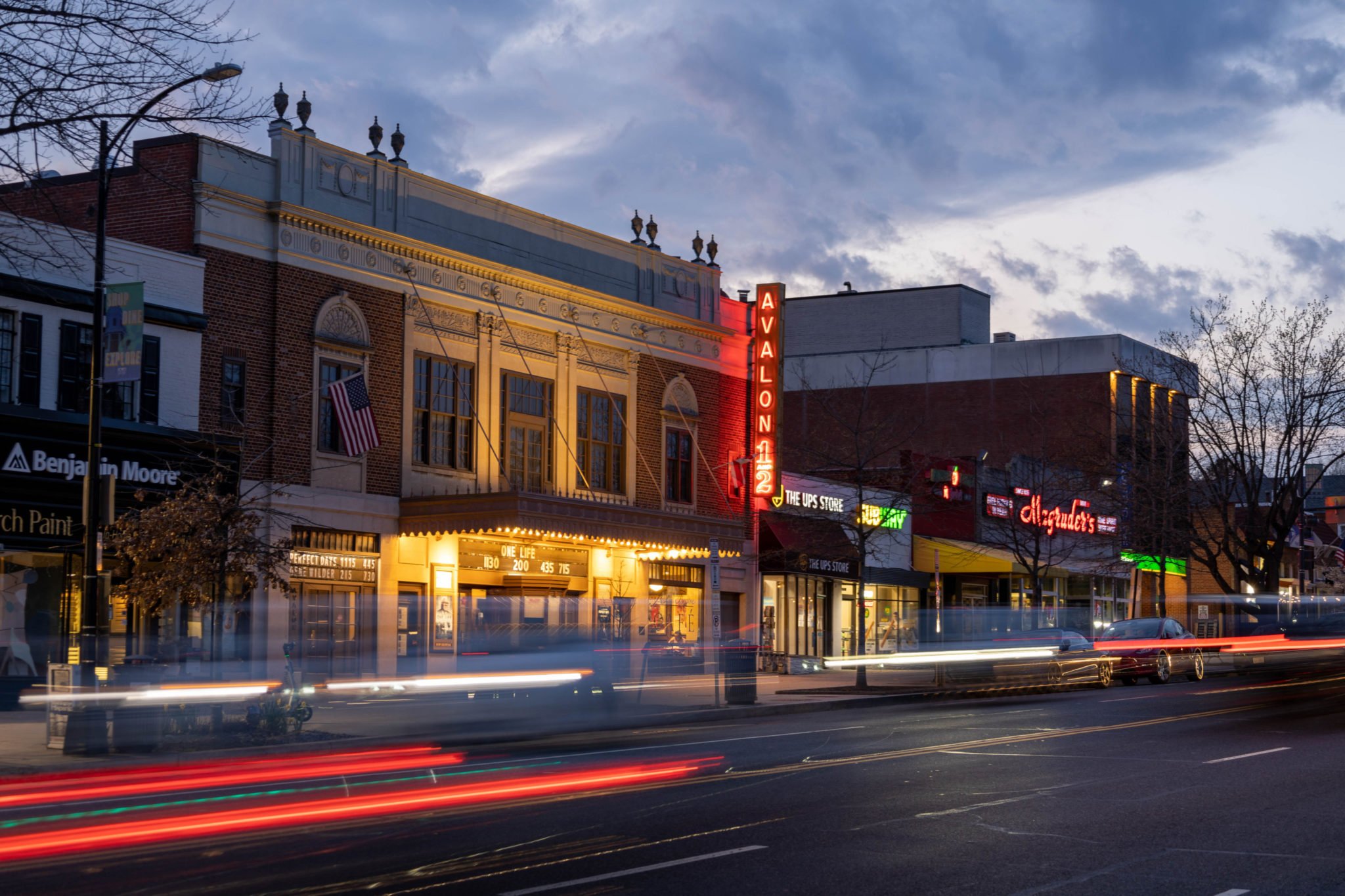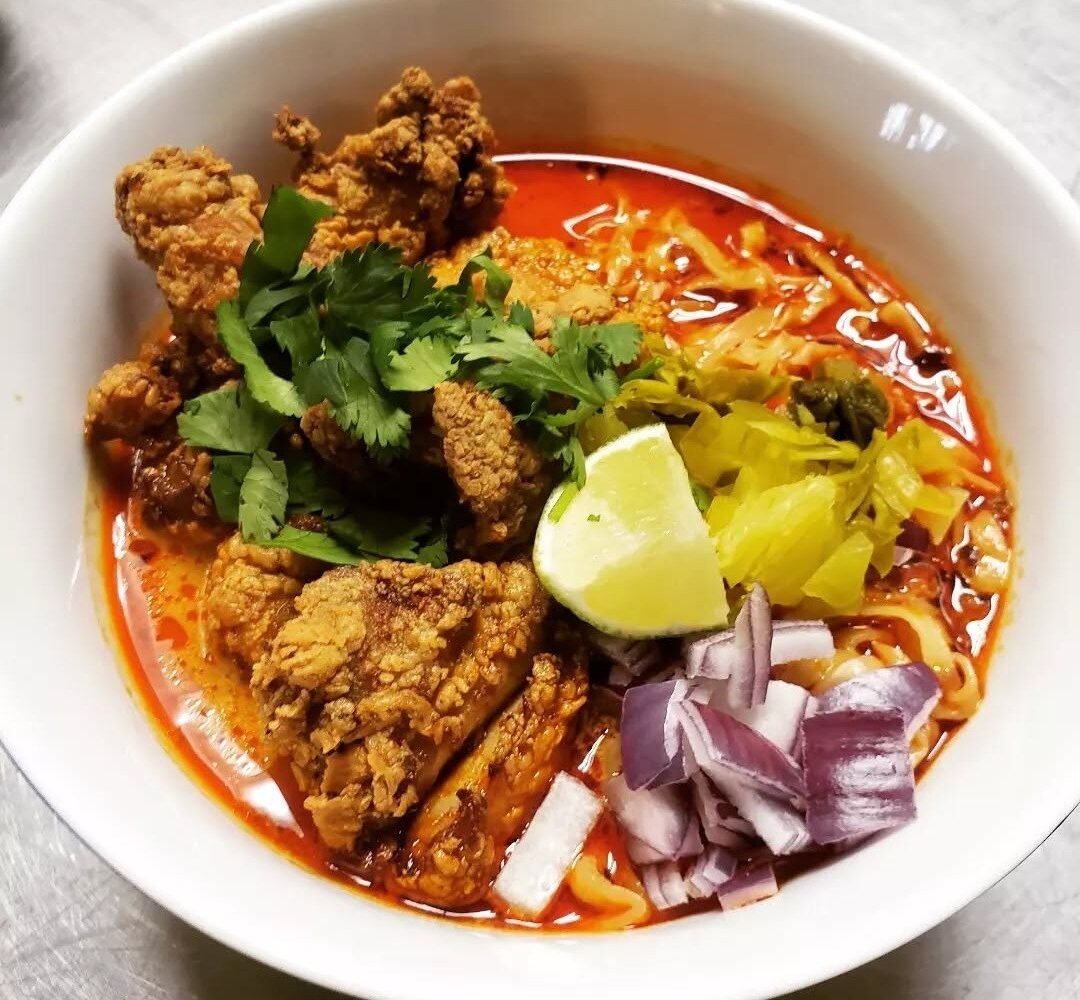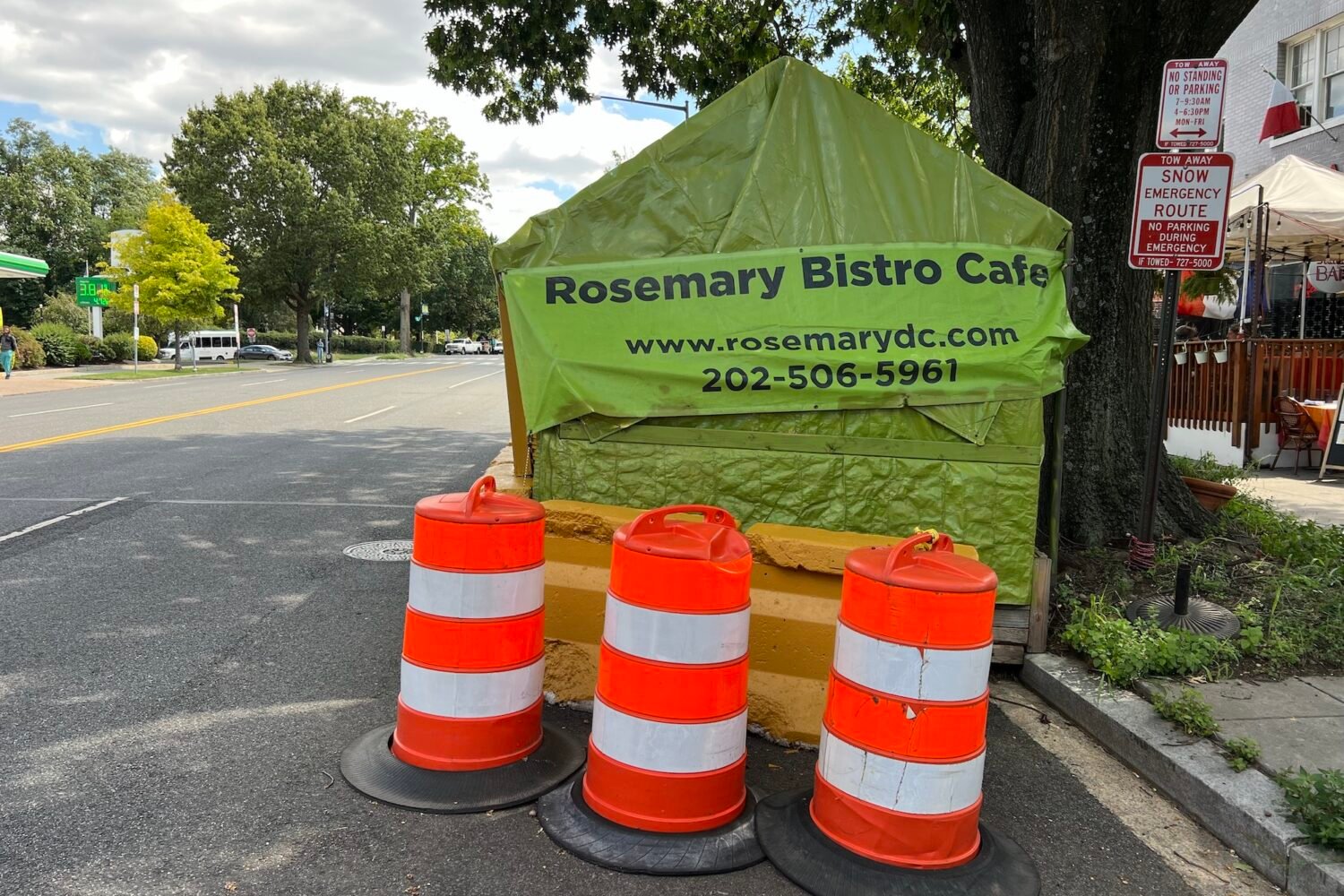Can one person change the course of a whole neighborhood? Mary Rowse has been living in Chevy Chase DC for 44 years, and during most of that time, she has been a tenacious presence in hyperlocal politics. For more than two decades, she’s run the Chevy Chase Community Listserv, a vital online forum that has long been the center of heated debate on neighborhood issues. She served as an Advisory Neighborhood Commissioner from 1987 to 1990. She started a neighborhood-watch program. She’s been an advocate and community leader on a wide range of controversial topics. “What happens around where I live matters to me, so I get involved,” she says. “I guess that’s just the way I am.”
But this time, some neighbors feel Rowse has gone too far. In November, she and the group she runs, the Chevy Chase DC Conservancy, submitted a nomination to turn a substantial chunk of the neighborhood into a historic district. If her proposal were to be greenlit, new construction projects and major exterior work would have to be approved by the city’s Historic Preservation Review Board; buildings more than 60 years old would rarely be allowed to be demolished.
The filing comes at a moment of intense debate about the future of Chevy Chase DC, a wealthy and predominantly white area near the top of the District. As part of an effort to build affordable housing and make the neighborhood more inclusive, the city is planning zoning changes for upper Connecticut Avenue, which serves as Chevy Chase DC’s main street. One especially controversial project is redevelopment of the public library and community center, which would include affordable housing and replace two modest but unappealing structures with a much larger building.
The Historic Preservation Review Board has seldom turned down a historic-district nomination. Now, though,
things might be different.
Rowse opposes these changes (she calls the library plan a “push to develop public land for private gain”), and though a historic district wouldn’t directly thwart efforts to bring more housing to the area, it would likely complicate the approval process for the library project and other potential affordable-housing plans. “The historic district is the last tool we have a chance to use to give us some say about any potential new construction in this community,” Rowse says. The historic district would also prevent developers from tearing down pre-1964 houses to replace them with larger (and more expensive) homes, something that seems to be happening in the area more often.
This might seem like just another neighborhood skirmish between people who support change and those who want things to stay the way they are. But the debate points to a larger aspect of DC life that affects a surprising number of residents: the concept of historic districts in general. The city has 37 such areas, from Anacostia to Mount Pleasant to U Street. That means about one in five buildings in the city is within those protected zones. But the process for turning a regular area into a “historic” one isn’t well known. It turns out that a single application spearheaded by one person can result in a significant transformation of how a whole segment of the city functions. The final call is made by the nine-member Historic Preservation Review Board. There’s no gathering of signatures or polling required, no public vote taken. The decision isn’t appealable.
In Chevy Chase DC, Rowse’s efforts have met strong resistance—lawn signs and listserv arguments have been popping up with increasing frequency. Another local group, Historic Chevy Chase DC, recently came out strongly against the idea, writing in a statement that “a more inclusive Chevy Chase is substantially more important than the addition of a 38th residential historic district.” Surprisingly, that organization had been behind its own 2008 effort to create a historic district in the neighborhood, which was withdrawn after a survey found that 77 percent of residents opposed it. Rowse was actually one of its founders, though she now finds herself at odds with the group.
Of course, slowing down development isn’t actually the point of a historic district. The designation is supposed to be used to preserve the character of a genuinely notable segment of the city. The Chevy Chase nomination—submitted by Rowse as official representative of the Chevy Chase DC Conservancy—acknowledges that the neighborhood’s dwellings and commercial buildings aren’t particularly cohesive, having been designed by 150 different architects over a nearly 60-year period. But it argues that “the developers shared the same urban design goals: to create an ideal suburban community on the outskirts of a major city.”
Many residents are unconvinced. Why should they be beholden to Rowse’s vision of the future? Opponents say they’re concerned that the review process for renovations and alterations would be needlessly arduous. But the debate also points to questions about what a city should be. It’s okay for things to change, opponents say, and Chevy Chase DC isn’t genuinely historic like, for instance, Capitol Hill. There’s no real reason to encase this neighborhood in amber.
Will the pushback be enough to stop the historic district? Precedent would seem to be on Rowse’s side. Over the dec-ades, the HPRB has seldom turned down a historic-district nomination. Now, though, things might be different. On April 8, DC’s Historic Preservation Office—which reviews nominations before recommending them to the HPRB—released an unusual statement. “Based on the information that HPO has received to date, it is clear that public sentiment on the proposal is sharply divided,” it read in part. “HPO is not prepared to recommend that the current proposal for a Chevy Chase Historic District be considered by the HPRB at this time.”
What that means isn’t entirely clear. To some advocates, it sounds like a de facto rejection of the nomination. A spokesperson for HPO says the Chevy Chase nomination “will remain on file” and could be scheduled for a hearing later. That seems like bad news for Rowse and her crew. It also suggests something more important for DC: Changes could be in the works at the HPRB.
If you’re a property owner in one of DC’s neighborhood historic districts, you know the acronym HPRB well. Part of DC’s Office of Planning, the HPRB was established in the early 1970s and took over responsibility for the city’s historic preservation from the federal government in 1983. The nine board members are architects, architectural historians, and other local citizens. In the past 15 years, the body has received 19 proposals for new neighborhood historic districts or expansions of existing boundaries. Out of those, it has denied just one—an expansion of the Mount Vernon Triangle Historic District—and shelved seven for additional research and community engagement. Proposals can be put on hold for years: One for Southeast DC’s Barney Circle in has been “pending” since 2008.
But most have been approved relatively quickly, sometimes in spite of significant community opposition. During a 2018 effort to turn Northeast’s Kingman Park into a historic district, one neighborhood poll found that 72 percent of residents were opposed. The HPRB signed off on it anyway.
A spokesperson for the HPRB declined to make any members available for an interview. In a written response to questions, she explained how the process works: The board receives a nomination from a property owner, Advisory Neighborhood Commission, or community organization. It considers whether the neighborhood is architecturally significant (for example, its houses could be especially uniform and exemplify a particular style such as Tudor or Victorian) or is associated with significant historical events. The board can also take into account how well researched the nomination is, along with the level of community support. Applicants present their case at a hearing, and then the board takes a vote.
The HPRB is a respected group that has done important work in preserving notable structures and areas around town. Without its efforts, DC would undoubtedly be a less charming place. But many advocates think preservationists haven’t adapted enough to the housing crisis, which they say can be tackled only by building at a faster pace and on a larger scale than the HPRB generally allows.
That may now be changing. The Office of Planning says it will launch a project this fall that could alter how it approaches historic districts. The effort—intended to boost inclusiveness and racial equity—will involve “data collection, mapping, and equity analysis of historic resources across the District,” a spokesperson tells Washingtonian.
At this point, I should probably disclose a relevant fact: I’m not just an observer here but a longtime resident of Chevy Chase DC myself. I grew up in a century-old semidetached house a block from Connecticut Avenue, and my family still lives there. We’ve long shopped at Magruder’s, a grocery store that opened here in 1967, and gone to movies at the Avalon Theatre, which has been operating for more than a century.
But it’s only in recent years that I’ve learned about some darker aspects of the area’s history. Like many Rockwellian streetcar suburbs that morphed into outer-DC neighborhoods, Chevy Chase for many years systematically excluded Black buyers. Francis G. Newlands, the white-supremacist Nevada senator who developed the neighborhood through his Chevy Chase Land Company around the turn of the 20th century, sued to keep Black families from buying homes there. And Chevy Chase barred people of color and Jews from homeownership for decades through a system of racist covenants. That eventually got knocked down by the Supreme Court. Yet over the years, the area has remained relatively undiverse—racially and economically—in part due to a lack of affordable housing. By making this expensive and historically exclusionary neighborhood a historic district, would Chevy Chase DC be perpetuating this unfortunate past?
When I heard about the historic-district proposal, my initial reaction was mixed. Chevy Chase DC is an attractive place, but it hardly strikes me as historically significant enough to join the ranks of Georgetown and Capitol Hill. Truly noteworthy buildings like the Avalon and the Chevy Chase Arcade are already listed on the National Register of Historic Places and would never be in danger. It’s hard for me to see why the rest of the area should, as of this moment, become forever locked in place. Neighborhoods—even rich-people ones adjacent to the suburbs—grow and evolve.
These are also among the arguments being put forth by Living Chevy Chase, a group formed to oppose the proposal. “If you’re just saying that the fact that we have a history makes us a historic district, well, every neighborhood has a history,” says Jim Feldman, an attorney who runs the organization. “You’re kind of preserving the exclusivity of the neighborhood.”
Living Chevy Chase isn’t taking an official position on the library project or affordable housing in general; its chief argument is about homeowner control. Feldman also thinks the restrictions that come with a historic district will hurt home values and prevent upgrades. Supporters of the application insist fears about onerous permitting are overstated, while opponents point to past difficulties that homeowners faced in other historic districts, such as the elderly Mount Pleasant couple who were denied permission to put a ramp on the front of their house.
Meanwhile, the Chevy Chase DC controversy is calling attention to the larger issue of the HPRB’s power to define what DC is. The freshly announced equity study—and the apparent pause on the Chevy Chase nomination—may be an attempt to answer a question housing activists have been asking for years: Is fossilizing the past really more important than planning for
the future?


















